Making the Most of Your Mile: Furman Elite & the Blue Shoes Mile
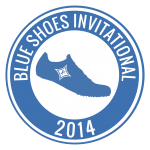
Presented by HOKA ONE ONE, the interview series sits down with Furman Elite's Robert Gary to speak about America's running groups, the Greenville, SC community and putting fans first.
By Bring Back the Mile
Start Small. Think Big. This is the first thing you'll see when you visit RunFurman.com, home to the Furman Elite training group and the Furman University Paladins Cross Country and Track & Field team. While the organization may have started from humble beginnings, it has quickly grown to fulfill the second part of its motto with a full-circle approach to training and giving back in the Greenville, SC community. In lead up to their flagship event, the Blue Shoes Invitational and Elite Mile, a Bring Back the Mile Featured Event, we sat down with the group's head coach, Robert Gary, a 1996 and 2004 U.S. Olympian in the 3000m Steeplechase. Gary was a six-time All-American and Big Ten Conference champion at Ohio State University ('96) and also led the Buckeyes as its coach from 1996 to 2012 overseeing nine team qualifiers for the NCAA Cross Country Championships and athletes such as NCAA All-American and top Miler Jeff See (2009).
BBTM: After two decades at Ohio State as an athlete and coach you moved to Furman University to be the head coach of the Paladin Cross Country and Track & Field team as well as the Furman Elite team. What was the genesis of the move to Greenville, SC?
Robert Gary: Ohio State was a special place and it was an incredible nice thing to be able to work with such great athletes, especially alums of the program like Brian Olinger and Jeff See post-collegiately. The tentacles of the program at Ohio State were far reaching and as I moved from head cross country coach to the head Track & Field coach in 2006 it was hard to have the energy and the focus to support the professional athletes. At the last Olympic Trials in particular, we were close or should have had one or two people that could have made the team. I look back and wonder if we twisted the dial this way or that way if it would have made a difference. I got a lot of questions on why I would leave Ohio State to come to Furman.
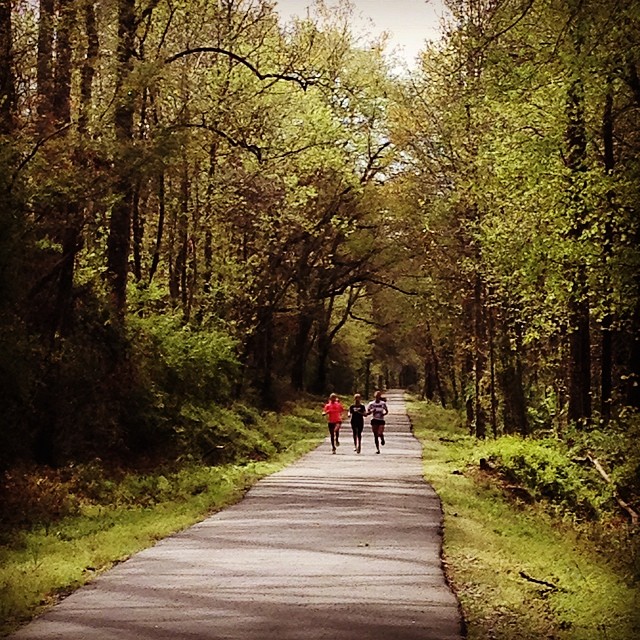 The support of Furman Elite allows them to be very professional with a forgotten demographic in our sport. It's a unique opportuntiy to be able to support those who finished 3rd or 4th at the NCAA Championships. Athletes who may have run an "A" standard one time or two times, but not an every year guarantee. Some of them have agents, some of them don’t and only a couple get stipends from a shoe company. And while the support from the shoe companies is great, to a certain extent there is no rhyme or reason who gets it. Obviously, the better people get it typically, but not always and many times they are only slightly better. First place at the NCAA Championships may make $60,000 a year and the next person will get nothing or maybe equipment if they are lucky. I didn’t want to be so dependent on it. This opportunity came up and I got to sit back and say ‘well you could do this’ and specialize in the distance area. It’s not revolutionary. Lots of schools do focus on distances; you have to choose your battles in higher education.
The support of Furman Elite allows them to be very professional with a forgotten demographic in our sport. It's a unique opportuntiy to be able to support those who finished 3rd or 4th at the NCAA Championships. Athletes who may have run an "A" standard one time or two times, but not an every year guarantee. Some of them have agents, some of them don’t and only a couple get stipends from a shoe company. And while the support from the shoe companies is great, to a certain extent there is no rhyme or reason who gets it. Obviously, the better people get it typically, but not always and many times they are only slightly better. First place at the NCAA Championships may make $60,000 a year and the next person will get nothing or maybe equipment if they are lucky. I didn’t want to be so dependent on it. This opportunity came up and I got to sit back and say ‘well you could do this’ and specialize in the distance area. It’s not revolutionary. Lots of schools do focus on distances; you have to choose your battles in higher education.
Beyond financial or equipment support by the shoe companies what sort of additional sources is Furman Elite able to leverage for its athletes?
One thing I wanted to get off the ground at Ohio State was to leverage all the unused dorm space. Just to be able to pay room and board for athletes is a huge benefit. To have been able to provide post-collegiates, including those I was coaching at the time, Rob Meyers, Dan Huling, Olinger and See, with a financial reprieve would have allowed whatever little money they had to go a little further. And if they didn’t have any support, it would have meant a little less work at the shoe store or wherever they may be working.
The combination of funding from private donors, an alumni base that is pretty excited about what it is going on and being able to provide room & board for some athletes through Furman University all helps. Cory Leslie and Nicole Bush also are full-time recognized NCAA coaches on our team. They aren’t in the office for ten hours, but they passed the recruiting test, make recruiting calls, they are out with the team and travel with us to meets. We also do some basic level things like sell t-shirts.
We also have some horsepower on the team with ten people in the group. That’s a pretty big group from what I can tell of others around the country. And it's a real team. We meet everyday, they all live here and eat together many of the times. It's great that the collegiate kids have access to bump into them everyday as well as other professional groups such as ZAP Fitness who is here for their training camp in the late winter.
Our athletes have put their lives on hold and I’m really proud of Furman University, which has said ‘if we’re going to do it, let’s really do it'. We have donors who are really excited about it and we also have a President who knows what Furman Elite is. Jeff See is really good with web technology and developed a documentary to introduce the team to the local running club. It made it up all the way to the Mayor of Greenville’s office to look at. He knows that just down the road at this small school we have some of the best athletes in the country. There isn’t a lot of places where you have a number of people who have run under 4 minutes for the Mile training together. It’s a niche thing; it’s not a road running thing, not even 5000m or 10,000m. It’s men and women middle distance athletes and some steeplechase; and some really good ones too.
Furman Elite Documentary from Jeff See on Vimeo.
It seems like a very compelling opportunity for post-collegiate athletes and you have been able to quickly attrack some incredible talent. How is the support being utilized?
It’s not just a pipe dream. Nicole Bush ended up winning a U.S. title last year, Stephanie Garcia joined the group. We’re only going to get stronger as people realize what we have to offer. There’s a good combination room & board support, physical training support, and I don’t charge for coaching. We also end up covering most of their domestic travel. Maybe that will allow them to get over to Europe twice instead of just once. Or rather than getting in just two days before, they can get in a little earlier and acclimate.
You have the financial support and the athletes, how does the group's mission statement tie this all together?
It’s good to have in the mission statement that obtaining qualifying standards is an important step and that national team representation is a great second step. Cory Leslie last year represented Team USA and Heidi Gregson, an Australian, represented her country at the Penn Relays. Nicole was at the 2013 World Championships. But, just as important is giving back to Furman and to our community.
We want to build up to huge invitationals and even our Blue Shoes Miles we’d like it to become an alternative to heading all the way out to Stanford on a weekend to get qualifying standards. We really only have the Raleigh Relays near by. We want to have really high level elite meets inside collegiate meets and our built-in infrastructure allows us to do this. Even just with something like race rabbits, especially the quality of our female athletes; there isn’t a lot of female rabbited races until you get over to Europe.
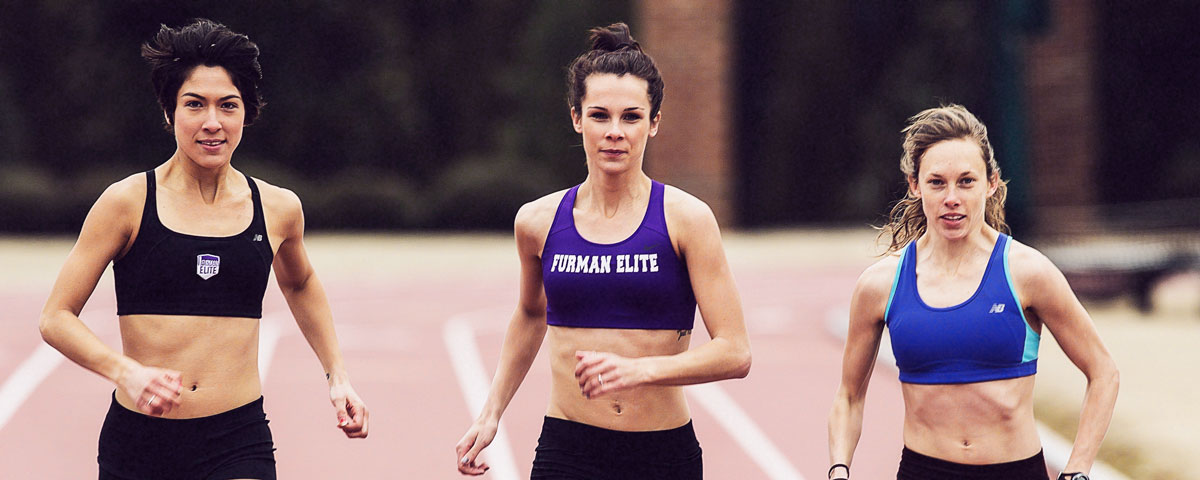
On the Run Furman website, you also market a number of community programs and even a way to hire the athletes. How does that function?
It’s been really great. Full disclosure, we started with the school across the street from us, which is where my son goes. He was literally the slowest kid in Greenville (laughs) and I had to do something (more laughs). We started with that school and we’ve now adopted another middle school. We go to their campus once every two weeks. Our summer cross country camp has also quadrupled and we're hosting more and more events.
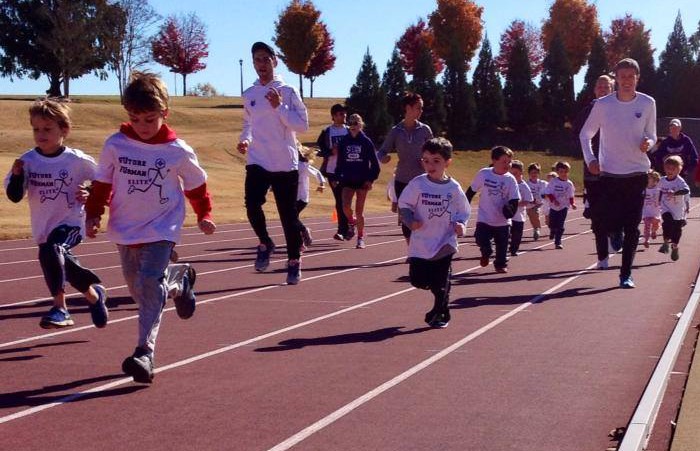 At the Blue Shoes Invitational we also have a clinic that will be held by our athletes for any kids 12 and under. They’ll get to see people break 4 minutes and then work alongside them in the kiddie clinic. It’s figuring out ways to better dress up and package our events. Sometimes it’s pretty depressing in our sport to see who actually shows up. It’s really hard to get the casual fan interested. But, working with the Greenville Track Club and other programs we do ask if our club can be something for everyone? In another month we’re launching a program with Furman faculty, where once a month they’ll meet with staff and write a training program for them.
At the Blue Shoes Invitational we also have a clinic that will be held by our athletes for any kids 12 and under. They’ll get to see people break 4 minutes and then work alongside them in the kiddie clinic. It’s figuring out ways to better dress up and package our events. Sometimes it’s pretty depressing in our sport to see who actually shows up. It’s really hard to get the casual fan interested. But, working with the Greenville Track Club and other programs we do ask if our club can be something for everyone? In another month we’re launching a program with Furman faculty, where once a month they’ll meet with staff and write a training program for them.
We have some really good horsepower and we’re just trying to find our way. It’s only our second year, but we keep finding things that resonate not only at Furman, but within the community of Greenville. It’s a really active community; at six in the morning our campus is packed with regular runners!
You mentioned the difficulties in reaching the casual fan. What are your thoughts in organizing events to attract them?
I have to say that I was really depressed at the Boston indoor meet, which was an excellent meet by the way, but if High School wasn’t involved the place might have been barren. I know Boston is a great running running town, but I was looking around our section and it was just the high school kids who competed and their parents. We replicated the high school model last year to get people to watch the elite portion and while we had 4,000 people for the Blue Shoes Mile it was a little overwhelming. We peeled away the High School meet this year to have a tighter program. Last year we were out there from 8:00am to when it was too dark for the 4x400m.
So one of my charges has been to look at how do we get the casual fan and the community out. We’ve looked at a beer garden, a picnic, a clinic. It then becomes an event. Not everyone is die hard about everything, but it will get them to stick around and stand up for the Blue Shoes Mile. We had a fantastic Mile last year - boy it felt like the Eugene Twilight. The stadium record was broken by Cory Leslie and I just stood back and thought, why can’t we do a couple of these a year? We’re really excited here.
Sometimes we cut ourselves off with knowing too much about the sport. We were up at the Hilton Garden Innvitational and the Camel City Mile in Winston-Salem in early February. One thing I love about Craig Longhurst, the facility director at JDL Fast Track is he is really open to real event management. He knows enough of the sport to not have pogo sticks going around during a race. Craig was also really good at the tail-end of meet management. I was really impressed that he sent a questionnaire afterwards to all of us on how to improve their event - what they can do better, what do you think of the timing'.
How has all of this informed how you go about the Blue Shoes Mile and Invitational?
At Blue Shoes, we have a great announcer from Ireland guiding people around, explaining what’s going on. At many meets we’ll run races at ten at night and there is nobody there. If we look at how to get people their first and create excitement, that’s what really builds an event. We’re having a big lunch out next to the track and hold people hostage that way (laughs). There is a road race in the morning and then have people show up for the main program, which will be run with a tight schedule from 4:00pm - 8:00pm.
By the way, how did "Blue Shoes" get into the name of the Invite?
One of our alums and member of our advisory board, Chris Borch ('78), tells a story of how at Furman you would receive a pair of blue shoes when you made the varsity team or especially when you got put on any scholarship. At the time there was hardly any funding. Any amount of money was huge and I think he got a $600 scholarship after his freshman year. For him, getting those blue shoes signified a point in his life when he realized that if you work hard enough and set a big goal and you get it, it can be a turning point in your life. He has now gone on to build a very successful micro mechanics business and he felt that the life lessons he learned and the process of goal setting was a very influential part of his life. He wanted to provide a similar opportunity in Furman and felt we could.
He’s been instrumental in creating excitement and laying the foundation for the team and event in the community. It’s a fundraising campaign, but he really wants to give kids the same experience that he had when he was at Furman.
The Blue Shoes Mile and Invitational was jump started itself when they spoke to Ray Flynn, Alan Webb’s agent, to find out what it would take to get him here. That was the event that got everything started and it’s become a Mile destination from collegiates to professionals ever since. Last year we brought in the Indiana Invaders, ZAP Fitness comes every year, Matt Elliott was here breaking 4 minutes for the first time on South Carolina soil. It was great to see him go on and have a pretty magical year. We really want to continue to build up that Mile event. We’re bringing in lights to hold events in the evening.
Turning to the some of your athletes, has Cory Leslie's Mile exploits made him a celebrity in Greenville?
(Laughing) We joke that he doesn’t even have a girlfriend yet! He always makes people aware that he’s on the market (more laughs). Word has gotten out about Cory and our group. There have been great articles in the paper and we’re starting a lot of cool traditions, which are definitely picking up momentum.
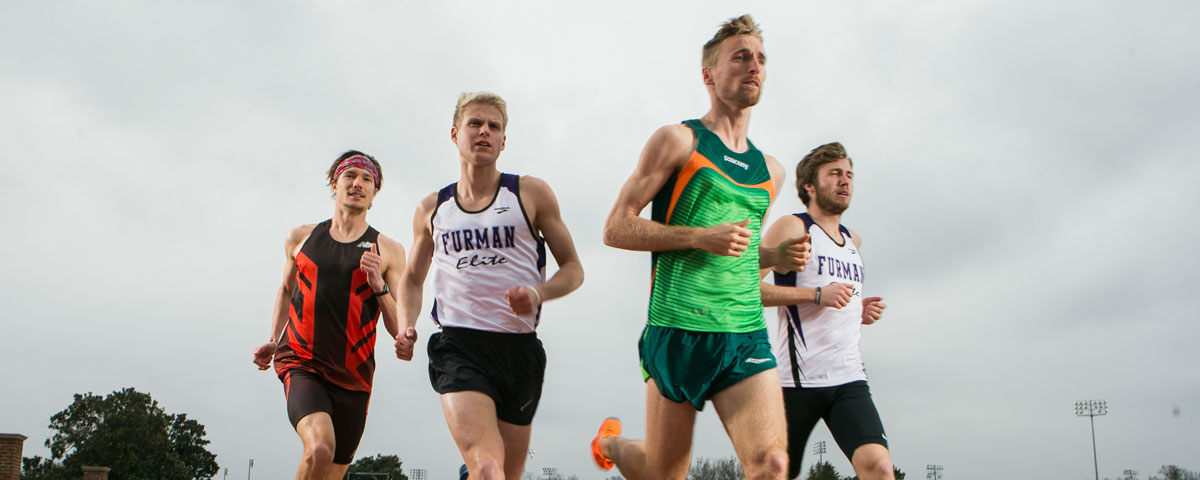
Personally, you were more of a Steeplechaser, but do you have any Mile memories yourself?
I remember getting beat at the Illinois State Meet in the Mile and while I was absolutely devastated, that experience did turn me on to the sport. For me it was soccer season afterwards, but my eyes were open to more in the sport of Track & Field. That was when the Keebler meet used to be up in Elmherst and I was able to go up there and run a Mile. I ran a 4:08 and really spurred me onto a new level of running. I qualified for the USA Junior Championships and made the team getting the opportunity to go overseas and compete at the World Junior Championships. It really opened my eyes that there was something past the State Meet; I can’t believe it.
What was your best Mile?
I never really got into a fast Miles, but I did run 4:03 on Ohio State’s flat 200m indoor track before the renovations. I’m sure that’s the equivalent of a 3:53 (laughing). Unfortunately, I can’t say that I ever broke 4 minutes, but I’ll take credit for that indoor one!
Looking beyond the 2014 Blue Shoes Invitational, what's next for Run Furman?
Next year we want to do a Festival of Miles type program. This year we are focusing on the Twilight component and making sure that it runs smoothly. But, in 2015 we're looking at replacing or operating alongside the road race, having eight to nine Mile divisions. A Mile is a doable for most people, unlike longer events, even a 5K is a lot for many people. There aren’t a lot of opportunities to run an organized Mile. That is one thing we want to do next year.
Professionally, I really want to stress that this is a pretty unique group with Furman Elite; this really is a forgotten demographic in our sport. There are more groups popping up and keeping people in the sport and increasing their opportunities across the country, not just in our group or Alberto’s (Salazar) group, is really important. These groups are really exciting and allow the U.S. to be as competitive as possible globally, increasing competition on American soil. Brooks is our sponsor here, but I do really like what they are doing at the elite level in Seattle with their Brooks Beast program.
You mention, Brooks as a Sponsor, but some of your athletes are sponsored by other companies. How does that dynamic work?
We actually do have a combination of sponsorship in our club amongst our athletes. Anything helps with expenses and most of the entities in our sport realize we’re not giving enough support, but between three entities we can give them enough to survive and thrive. Brooks sponsors Furman Elite and the collegiate team, but I don’t want a group that is solely dependent on one source of revenue. Some may not wear our uniforms at meets, but they represent us all the time, particularly back at home. Brooks in particular has been really good about it because I think they realize that they’ll benefit and all boats rise.
Thank you for your time Coach and good luck to all of your athletes and the Furman community.
Thank you.
